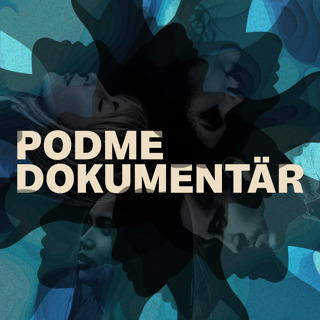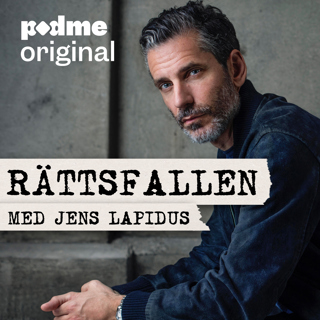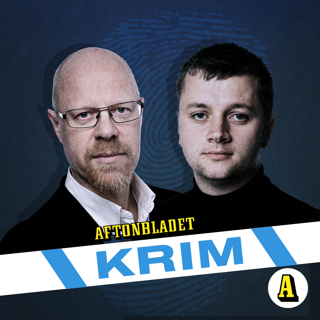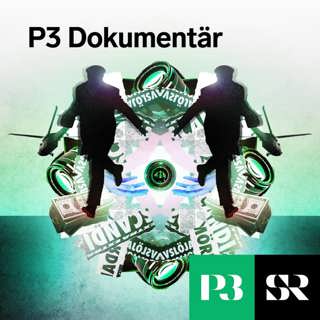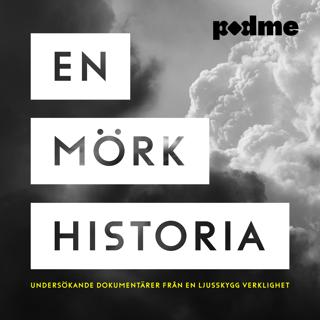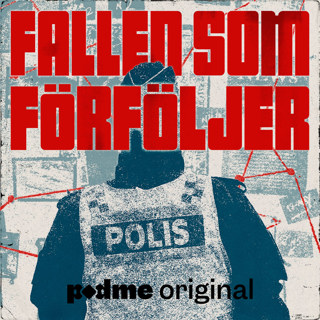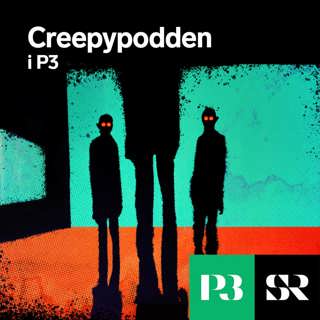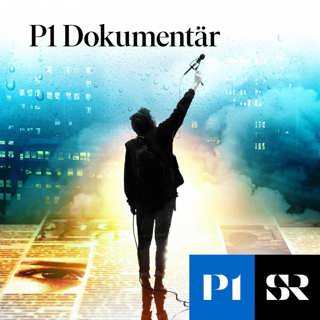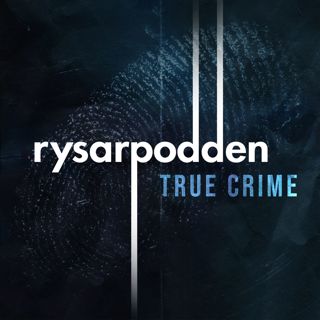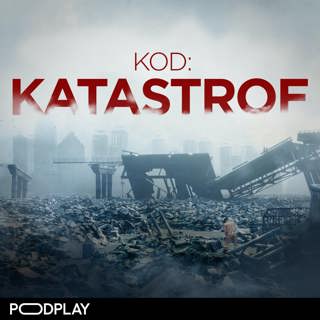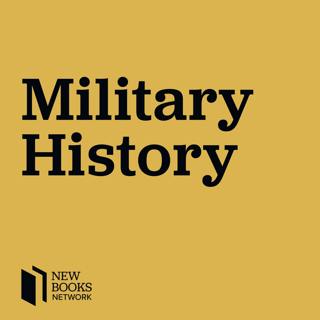
Derek J. Penslar, “Jews and the Military: A History” (Princeton UP, 2015)
In Jews and the Military: A History (Princeton University Press, 2015), Derek J. Penslar, the Stanley Lewis Professor of Israel Studies at the University of Oxford and the Samuel Zacks Professor of Jewish History at the University of Toronto, explores the expansive but largely forgotten story of Jews in modern military service. Over more than three centuries, millions of Jews have joined, voluntarily and not, the military of their home country. Military service offered an opportunity to demonstrate masculine pride, to show worthiness for emancipation, or for upward mobility. The history of Jewish military service sheds light on the experience of Jews and power in the modern world. Learn more about your ad choices. Visit megaphone.fm/adchoices Support our show by becoming a premium member! https://newbooksnetwork.supportingcast.fm/military-history
1 Okt 201531min

Terrance J. Finnegan, “A Delicate Affair on the Western Front: America Learns How to Fight a Modern War in the Woevre Trenches” (The History Press, 2015)
In his second book, author Terrance J. Finnegan describes America’s early experience fighting the Germans during World War I. Finnegan’s A Delicate Affair on the Western Front: America Learns How to Fight a Modern War in the Woevre Trenches (The History Press, 2015) provides in-depth research and a great deal of context to portray the 26th Infantry Division’s desperate defense of the Woevre sector in April 1918. Relying on meticulous mining of primary documents, the author describes the leaders, tactical doctrine, weaponry, and intelligence processes of the French, German, and new American forces fighting near Seicheprey in northeastern France. Finnegan also builds on research from his first book, Shooting the Front: Allied Aerial Reconnaissance and Photographic Interpretation on the Western Front–World War I, to carefully explain intelligence collection on both sides of the trenches. In a lively interview, Finnegan explains how the action near Seicheprey–sometimes called a trench raid, sometimes a battle–was vitally important to newly arrived American soldiers learning the craft of trench warfare. It was an extremely dangerous environment, with chemical weapons, artillery duels, small-scale trench raids, and snipers making life miserable for the combatants. At Seicheprey, the Germans decided to test the metal of American National Guard soldiers of the 26th Yankee Division, one of the first four US divisions to arrive in France. Early on 20 April 1918, using Stormtroop tactics perfected in other sectors of the Eastern and Western Fronts, the Germans smothered American positions with high explosive and chemical artillery fire, followed by infantry attacks that bypassed strong points and penetrated the defenses in many areas. The New England Guardsmen gave up some ground in a confused battle, but soon counterattacked and gained back what they had lost. This is a dense book, packed with details about the adversaries that any reader interested in World War I ground combat would appreciate. It is a holistic view of a single engagement that leaves no questions and thoroughly explains the action. Learn more about your ad choices. Visit megaphone.fm/adchoices Support our show by becoming a premium member! https://newbooksnetwork.supportingcast.fm/military-history
14 Sep 20151h

Dan Stone, “The Liberation of the Camps: The End of the Holocaust and its Aftermath” (Yale UP, 2015)
Every year I ask my students to tell me when the Holocaust ended. Most of them are surprised to hear me say that it has not yet. Today’s podcast is the fourth of a summer long series of podcasts about the system of camps and ghettos that pervaded Nazi Germany, its satellite states and the regions it controlled. Earlier this summer I talked with Geoff Megargee about the Holocaust Museum’s Encyclopedia of Camps and Ghettos, Sarah Helm about the women’s camp of Ravensbruck and Nik Wachsmann about the evolution of the concentration camp system. I’ll conclude the series in a few weeks with an interview with Shelly Cline about the female guards who staffed some of the camps. In this fourth episode, Dan Stone makes a convincing case that the Holocaust reverberated for years after the war came to a close. The Liberation of the Camps: The End of the Holocaust and its Aftermath (Yale University Press, 2010),is slender but packed with information and insights. It certainly provides a top-down discussion of the issues and challenges that accompanied the dissolution of the camp system. He makes clear the various policies adopted by the liberating countries and how these were caught up in both domestic and international politics. But it goes beyond this to offer a wide variety of anecdotes and perspectives of camps survivors and liberators demonstrating the long-lasting impact of their experiences. It’s a perfect example of the kind of integrated history of the Holocaust that Nik Wachsmann identified in his discussion. Learn more about your ad choices. Visit megaphone.fm/adchoices Support our show by becoming a premium member! https://newbooksnetwork.supportingcast.fm/military-history
25 Aug 20151h 1min

Parks M. Coble, “China’s War Reporters: The Legacy of Resistance against Japan” (Harvard UP, 2015)
Parks M. Coble‘s new book is a wonderful study of memory, war, and history that takes the Sino-Japanese War of 1937-1945 and its aftermath as its focus. China’s War Reporters: The Legacy of Resistance against Japan (Harvard University Press, 2015) is organized in two major parts. The first part (Ch. 1-5) look closely at writing done by journalists and intellectuals during the war, focusing especially on those who were associated with the National Salvation Movement. Here we find a fascinating account of Chinese journals, newspapers, and war reporters that pays special attention to the political and ideological motivations behind wartime writers’ choices of what to report and how to report it. The distinctions here between rural and urban experiences and knowledge of the war are especially striking. The second part (Ch. 6-7) looks at the “re-remembering” of the war, including the consequences of communist rule for Salvation Movement writers in the immediate aftermath of the war, the disappearance of their legacy from public memory, and the refiguring of their work in the context of post-Mao “new remembering” of the war. Coble also considers the consequences of an increasing emphasis on nationalism in China for the re-remembering of the war in academic and popular media. Collectively, the chapters of China’s War Reporters argue that the particular way that the war has been remembered in China has distorted and constrained historical scholarship. It’s an exceptionally clear and well-written history. Learn more about your ad choices. Visit megaphone.fm/adchoices Support our show by becoming a premium member! https://newbooksnetwork.supportingcast.fm/military-history
10 Aug 20151h 3min

Barak Kushner, “Men to Devils, Devils to Men: Japanese War Crimes and Chinese Justice” (Harvard UP, 2015)
Barak Kushner‘s new book considers what happened in the wake of Japan’s surrender, looking closely at diplomatic and military efforts to bring “Japanese imperial behavior” to justice. Men to Devils, Devils to Men: Japanese War Crimes and Chinese Justice (Harvard University Press, 2015) focuses on the aftermath of the Japanese war crimes, asking a number of important questions: “How did the Chinese legally deal with Japanese war crimes?” and “What were the Japanese responses, and [how] did these processes shape early Cold War Sino-Japanese relations?” Two ways of reconsidering history shape the study. First, Kushner reframes Japan as a decolonizing empire, not just a defeated country. At the same time, he looks at the “shifting landscape of the concept of law in East Asia” and its impact on relations in the region during this period, especially in terms of international law and associated notions of accountability. These two broad historiographical re-orientations motivate an extraordinarily thoughtful and detailed treatment of the ways that conflict between the KMT and the CCP, and relations of both with other global powers, shaped the notion and history of war crimes trials. It’s a clearly written and compellingly argued account that’s also a pleasure to read! To hear our conversation about Barak’s previous book Slurp!: A Social and Culinary History of Ramen – Japan’s Favorite Noodle Soup, see here. Learn more about your ad choices. Visit megaphone.fm/adchoices Support our show by becoming a premium member! https://newbooksnetwork.supportingcast.fm/military-history
1 Aug 20151h 7min

Suzanne Broderick, “Real War vs. Reel War: Veterans, Hollywood, and WWII” (Rowman and Littlefield, 2015)
In hew new book Real War vs. Reel War: Veterans, Hollywood, and WWII (Rowman and Littlefield, 2015), Suzanne Broderick shares how she discussed a number of World War II films with veterans and others who experienced the conflict first hand. Learn more about your ad choices. Visit megaphone.fm/adchoices Support our show by becoming a premium member! https://newbooksnetwork.supportingcast.fm/military-history
24 Juni 201559min

David R. Stone, “The Russian Army in the Great War: The Eastern Front, 1914-1917” (UP of Kansas, 2015)
Readers wanting to learn more about the Great War on the Eastern Front can do no better than David R. Stone‘s new work, The Russian Army in the Great War: The Eastern Front, 1914-1917 (University Press of Kansas, 2015). The last work to treat this comprehensively was Norman Stone’s (no relation), The Eastern Front, 1914-1917, published in 1975. While literature in English has been sparse, the Russian-language literature on the Eastern Front has grown tremendously in recent decades, and so an update was desperately needed. David Stone does more than updated the earlier Stone’s work, though. He deftly shifts our perspective not only on the Eastern Front but on the war as a whole by emphasizing commonalities (among empires, operations, home fronts) while appropriately highlighting the many unique challenges faced by the tsarist state. We learn not only about the iconic clashes in East Prussia or the Brusilov Offensive, but see the critical importance of campaigns in Poland, the Caucasus, and Romania to the Russian defeat. Learn more about your ad choices. Visit megaphone.fm/adchoices Support our show by becoming a premium member! https://newbooksnetwork.supportingcast.fm/military-history
12 Juni 201545min

Juergen Matthaus et al., “War, Pacification and Mass Murder, 1939: The Einsatzgruppen in Poland” (Rowman and Littlefield, 2014)
Historians have spent the last two decades detailing and explaining the actions of the Einsatzgruppen in the Soviet Union. We now know much more than we used to about the escalation of violence in 1941 and the so-called “Holocaust by Bullets.” The actions of the Einsatzgruppen in Poland, in contrast, are less well known.But they are crucial to understanding the evolution of violence against Jews and others.JuergenMatthaus, Jochen Boehler, and Klaus-Michael Mallmann set out to fill this gap.Their work War, Pacification and Mass Murder, 1939:The Einsatzgruppen in Poland (Rowman and Littlefield, 2014)–part of theUnited StatesHolocaust Memorial Museum’s excellent Documenting Life and Destruction series–sets carefully chosen documents into a richly described military and institutional context. By doing so, they illustratenot just what the Einsatzgruppen did, but how theiractions evolved over time, how they interacted withWehrmacht and political leaders and how this violence impacted people on the ground. In the interview, I talked with Juergen Matthaus about the origin of the volume, the nature of violence in Poland and the way in which this violence set the stage for the escalation of persecution and destruction. Learn more about your ad choices. Visit megaphone.fm/adchoices Support our show by becoming a premium member! https://newbooksnetwork.supportingcast.fm/military-history
18 Maj 201552min


